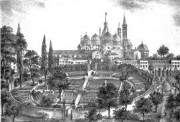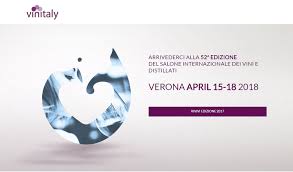The Origins
Leonardo da Vinci was born in Anchiano, near Florence, on April 15th, 1452, from an affair between the rich, young notary Piero da Vinci, and a common girl named Caterina. Piero da Vinci and his father Antonio, he also notary, welcomed Leonardo, who grew up between grandparents and uncles in a family environment. His natural mother married a local farmer and his father had four weddings and well 12 children. Leonardo was brought by his father in Florence. He was a lively child, ambidextrous and wrote backwards, already revealing, at his young age, carefree strokes of genius.
Education
Growing, the young Leonardo, became increasingly interested in the drawing ; having regard to its quality, the father decided to take him in the workshop of Verocchio, famous painter at that time who taught him drawing, painting, sculpture, architecture, and mechanical engineering, and where some artists that would later become very important painters, such as: Ghirlandaio, Perugino, went to learn.
Early Works
His early works ( the “Landscape with River”; the participation to “Madonna and Child with Angels” the participation to “Baptism of Christ“, the “Dreyfus Madonna“, the ” Madonna of the Carnation “, the “Annunciation “, the ” Portrait of a Washington Woman “) were all judged by the great Giorgio Vasari , who saw Verrocchio beginning to ” fear ” the extraordinary talent of Leonardo. In those youth years Leonardo began to be interested in scientific disciplines as anatomy, astronomy, phisics and mechanics. But soon he returned to his first love: drawing and painting…at that time Leonardo got his first, official works: two Holy Mary portraits ( Madonna di Benois and Madonna del Garofano ), the San Bernardo Chapel into the Lordship’s mansion ( soon abandoned in favor of other painters ) and an Annunciation. Around 1478 AD Leonardo became intimate with the powerful Medici family. They were the times of Lorenzo de Medici, also nicknamed ” The Magnificient “, who asked Leonardo to give him mechanical and military consulting and good advice. After being housed at Medicean’s Court for a while, Leonardo was sent to Milan by Lorenzo de Medici, at Sforza’s Court, for improving the politcal relationships between the two Potentates ( in that circumstance he brought a new musical instrument to Ludovico il Moro: the Lira ).
In Milan, at Sforza’s Court
In Milan Leonardo found his perfect environment: a modern, largely inhabited City. Despite its initial problems with the local dialect, he managed to integrate and began to write a nine chapters’ book about : hydraulics, architecture, engineering, sculpture and painting. In Milan Leonardo also studied mechanics, irrigation methods and scenography; and painted some fantastic portraits by focusing on his Florentine anatomy studies ( very famous are: Cecilia Gallerani’s Portait, best know as ” The Lady with the Ermine “, ” Portrait of a Musician “,” The Beautiful Ferronnière ” ). At the Court of Milan, Leonardo was also in charge of preparing the scenery and decorations of shows and parties, such as the marriage between Gian Galeazzo Sforza and Isabella of Aragona, and other famous marriages. Another big work for the Genius should have been the construction of a huge equestrian statue, dedicate the memory of Francesco Sforza, father of Lodovico il Moro; but unfortunately, after preparing the clay mold, the war started between the French and the Aragoneses, in Naples, made it necessary to use all the available bronze, to forge new weapons, leaving the potential statue without more material available. Leonardo was very frustrated for that important job’s failure, when through the help of Lodovico il Moro, he was awarded the contract for the fresco in the refectory of the Santa Maria delle Grazie’s Convent. The fresco depicted is ” the Last supper of Christ ” in an original way, with a perfect perspective; where Leonardo used his scientific knowledge, even if the new technique used by him to paint the fresco didn’t turn out succesful, indeed the painting had many problems due to the damp of the near kitchens. Afterwards, Leonardo devoted himself to the restorations of some areas of the Sforzesco Castle, and to the creation of the scenographies of some theater shows. In the same period, the French army came to Milan and took it, while Lodovico was in Insbruck, trying to convince the Emperor to help him against them.
Wandering period and back to Florence
Leonardo decided then to leave the beloved City for wandering in many Cities and Courts ( Venice where he planned a dam on Isonzo river to counter the Turks; Mantua where Isabella d’Este wanted him as the Court’s official painter, in place of the now elderly Andrea Mantegna; Rome, etc … ). Finally he returned in Florence, where he continued to paint some canvas and where he met the rising star Michelangelo Buonarroti,23 years younger, more irritable and instinctive than Leonardo. among the two of them, friendship was never born. In Florence Leonardo painted the famous ” Madonna dei Fusi ” ( 1501 AD )for the France King’s secretary. in 1502 AD Leonardo was hired by Cesare Borgia, son of Pope Alessandro Borgia, as a military engeneer and architect.
In Cesena and back to Florence
He went to Cesena and began to work at military assignments as new and more detailed maps, Cities fortifications, an innovative gunpowder (made with Coal, saltpeter and sulfur), diving machines and flying machines. in 1503 AD the Genius came back to Florence, avoiding, by a hair’s breadth, the Borgia’s collapse. Here, in Florence, he was awarded with the work for a huge fresco, planned for a wall of the Hall of the five Hundred, and destined to represent the Anghiari’s Battle. Here, as well as in the Santa Maria delle Grazie’s Convent, he had a lot of problems with the fresco, since he didn’t manage to dry all the enormous painted surface and the colors trickled and dripped on the floor. The fresco never appeared and also its sketchs on the cardboard were lost; there are anyway some beautiful copies, among which the best one is probably the Rubens sketch. In 1503 AD he began painting his masterpiece: ” The Gioconda “. The Gioconda seems to be the extraordinary portrait of Lisa Gherardini, wife of Francesco Bartolomeo del Giocondo. Within the painting it emerges all the grace, poetry, naturalness and the soul, that carry this opera to reach the highest tops of the painting of all times. The science kept on fascinating Leonardo, that, in this period, began a great Treatise ( divided in four main parts ) over the Flight ; the first chapter is about flight with wings beat, the second is about the flight without wing’s beat; the third is about flight common to many different animals , and the last is about the mechanical flight. Leonardo continued to study winds, air friction, weights falling and birds’ anatomy; and all these elements led him to build some flying machines. The new French Governor of the City of Milan Charles d’Amboise, and the French King Luigi XII, in first person, wanted Leonardo to return and he accepted their invitation, settling near San Babila’s zone. During this new Milanese period, Leonardo studied and solved geological, urbanistic and hydraulic problems; also studied human anatomy by sectioning some human bodies; and painted some gorgeous canvas as ” Sant’Anna ” ( St. Anne ), the ” Virgin Mary with baby and little lamb “, and the ” Virgin of the rocks “.
in Rome
In the 1513 AD the Sfoza family, with the help of Cambrai’s League, recaptured the City, and, in all this mess, Leonardo decided to move to Rome, accompanied by his two better pupils: Melzi and Salai, and his servant Albieri. He was well accepted by the Pope Leone X ( a Medici family member ) and his brother Giuliano de Medici, who accomodated them in a house in the Vatican Area. In Rome, Leonardo painted the famous ” Leda and the Swan “, and continued his study over geometry, optics and mechanics. He also worked at the drainage of the Pontine’s swamps, on the study over the effectiveness of burning mirrors for generating propulsive energy and at the restoration of Civitavecchia’s Harbour. due to his anatomic studies , he started being pointed out of witchcraft, and even for that reason he decide to leave.
Last years in France, at Amboise
Now elderly and tired, in 1517 AD, he accepted the invitation of the King of France Francesco I to go living there. He went to Amboise, with Melzi and Battista Albieri and settled in a Castle close to Amboise. The king gave him the title of First painter, Architect and Mechanic of the Royal House. Leonardo felt himself at ease there and painted some other lesser canvas. He also planned a Royal Palace for Francesco’s mother and organized huge parties for the King… and for him he planned and built a robot lion-shaped.
Leonardo’s Death
He died in 1519 AD, leaving to Melzi, Salai, Albieri and his 12 half-brothers and stepsisters an incredibly abundant heritage, made of sketches, drawings, money, and a couple of real estates. He was buried in San Florentine Church close to the Castle of Amboise. Fifty years later, His remains were stolen and nobody knows where they could be today.
Personality
Leonardo was a scientist, neither a religious man nor a fan of Priests. He loved nature and thought that all the things of this World can be explained starting from nature, through the scientifc approach. He wasn’t metaphysical at all; in his opinion the soul passed from mother to son through the umbilical cord. He accepted the Alchemy as a natural process, and was strongly contrary to the Magic. He was a good astronomer, engineer, hydraulic and geologist. He described in his sketchs the bicycle, the car, the submarine, the diver, the helicopter and the parachute. He built the first robot, the war machines and the flying machines, He studied the solar and hydraulic energy. He was ahead of its time, with incredible studies and insights; and, moreover, he was an extraordinary artist. He combined science and art in an eclectic way. He simply was… Leonardo da Vinci !






